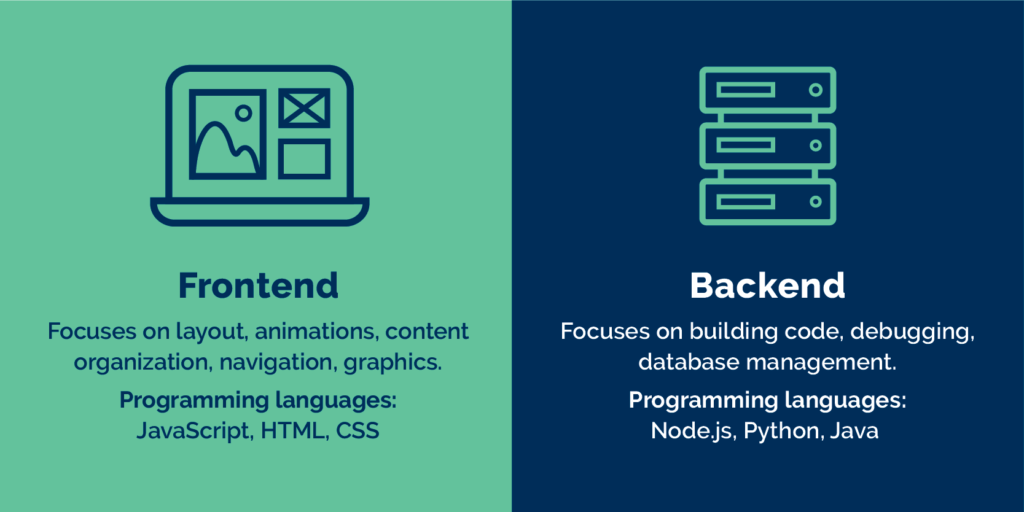Two distinct roles play pivotal roles in creating seamless and interactive digital experiences: Front-End Developers and Back-End Developers. As websites and applications become increasingly sophisticated, understanding the unique responsibilities of each role is essential for anyone navigating the tech landscape. In this exploration, we’ll break down the differences between front-end and back-end development, shedding light on the skill sets, responsibilities, and collaborative efforts that define these integral positions.
Front-End Developer: Crafting the User Experience
Front-end developers are the architects of the user interface, responsible for what users see and interact with on websites and applications. Armed with a mastery of HTML, CSS, and JavaScript, these developers bring designs to life, ensuring a visually appealing and intuitive user experience. From responsive layouts to engaging animations, front-end developers focus on creating a seamless interface that captivates users from the moment they land on a site.
Key Responsibilities Front-End Developer:
- Implementing responsive designs for various devices.
- Enhancing user experience through intuitive navigation and interaction.
- Collaborating closely with UI/UX designers to translate visual concepts into code.
- Staying abreast of emerging front-end technologies to continually enhance development skills.
Back-End Developer: Building the Digital Infrastructure
On the flip side, back-end developers work behind the scenes, constructing the digital infrastructure that powers websites and applications. Proficient in server-side languages such as Python, Java, or Node.js, these developers create the logic and databases that enable seamless functionality. Security, scalability, and performance are their primary concerns, as they build the backbone that supports the user-facing elements crafted by front-end developers.
Key Responsibilities of Back-End Developer:
- Developing server-side logic and databases to ensure robust functionality.
- Implementing security measures to protect sensitive data.
- Optimizing applications for speed and scalability.
- Collaborating with front-end developers to integrate user-facing elements with server-side logic
The Collaborative Dance: Front-End and Back-End Integration
While front-end and back-end developers have distinct roles, their collaboration is crucial for a harmonious digital experience. Through effective communication and understanding of each other’s work, these professionals unite to create a seamless and functional end product. Application programming interfaces (APIs) serve as the bridge between these realms, allowing data to flow smoothly from the back end to the front end.

In the dynamic world of web development, both front-end and back-end developers play vital roles in creating the digital landscapes we navigate daily. Whether you’re captivated by the aesthetics of user interfaces or fascinated by the intricacies of server-side logic, understanding the differences and collaborations between these roles is essential for anyone venturing into the exciting field of web development



